Art G.Shvecova (Design Graphics - Black-hole_080218)
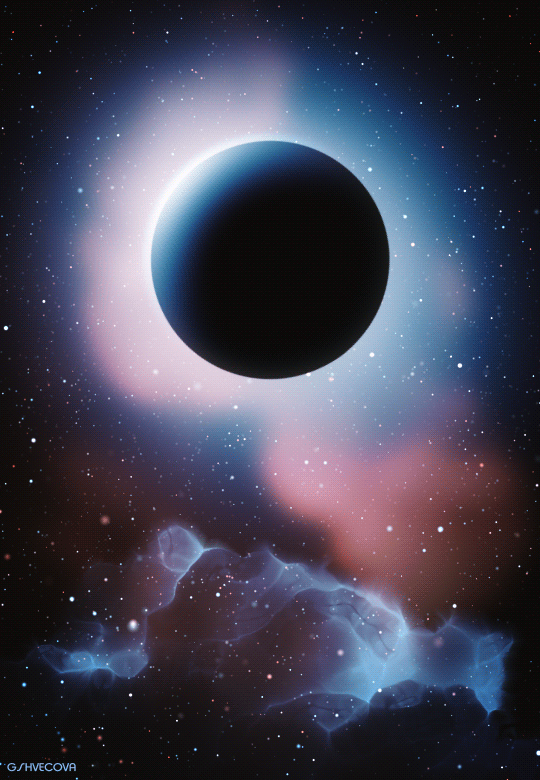
Art G.Shvecova (Design graphics - Black-hole_080218)
More Posts from Epic-flight and Others

Inner Depth.
You can get this GIF as a phone wallpaper for free through the Zedge app.
You can also get this GIF as a looping 1080p video if you support me on Patreon.
Twitter / Instagram / Shop / Patreon / Zedge

Flash Forward.
Twitter / Instagram / Gumroad / Patreon
KnownOrigin / SuperRare / Zedge

John Berkey cover art for The Best of Frederik Pohl, 1975.

Boo-tiful Ring Galaxies

A ghoulish secret lurks within each of these gorgeous galaxies. Their rings are dotted with stellar graveyards!

These objects are called ring galaxies, and scientists think most of them form in monster-sized crashes. Not just any galaxy collision will do the trick, though. To produce the treat of a ring, a smaller galaxy needs to ram through the center of a larger galaxy at just the perfect angle.

The collision causes ripples that disturb both galaxies. The gravitational shock causes dust, gas, and stars in the larger galaxy’s disk to rush outward. As this ring of material plows out from the galaxy’s center, gas clouds collide and trigger the birth of new stars.

In visible light, the blue areas in the galaxies’ rings show us where young, hot stars are growing up. Faint, pink regions around the ring mark stellar nurseries where even younger stars set hydrogen gas aglow.
The newborn stars come in a mix of sizes, from smaller ones like our Sun all the way up to huge stars with tens of times the Sun’s mass. And those massive stars live large!
While a star like our Sun will last many billions of years before running out of fuel, larger stars burn much brighter and faster. After just a few million years, the largest stars explode as supernovae. When massive stars die, they leave behind a stellar corpse, either a neutron star or black hole.

When we turn our X-ray telescopes to these ring galaxies, we see telltale signs of stellar remnants dotted throughout their ghostly circles. The purple dots in the X-ray image above are neutron stars or black holes that are siphoning off gas from a companion star, like a vampire. The gas reinvigorates stellar corpses, which heat up and emit X-rays. These gas-thirsty remains are beacons lighting the way to stellar graveyards.
Spiral galaxies — like our home galaxy, the Milky Way — have curved arms that appear to sweep out around a bright center. The dust and gas in those spiral arms press together, causing cycles of star formation that result in a more even mix of new stars and stellar corpses scattered throughout our galaxy. No creepy ring of stellar corpses here!
To visit some other eerie places in the universe, check out the latest additions to the Galaxy of Horrors poster series and follow NASA Universe on Twitter and Facebook for news about black holes, neutron stars, galaxies, and all the amazing objects outside our solar system.
Make sure to follow us on Tumblr for your regular dose of space: http://nasa.tumblr.com
You Are Made of Stardust
Though the billions of people on Earth may come from different areas, we share a common heritage: we are all made of stardust! From the carbon in our DNA to the calcium in our bones, nearly all of the elements in our bodies were forged in the fiery hearts and death throes of stars.
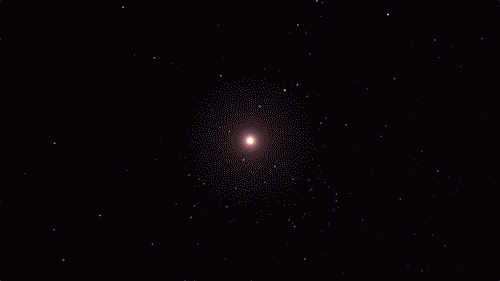
The building blocks for humans, and even our planet, wouldn’t exist if it weren’t for stars. If we could rewind the universe back almost to the very beginning, we would just see a sea of hydrogen, helium, and a tiny bit of lithium.
The first generation of stars formed from this material. There’s so much heat and pressure in a star’s core that they can fuse atoms together, forming new elements. Our DNA is made up of carbon, hydrogen, oxygen, nitrogen, and phosphorus. All those elements (except hydrogen, which has existed since shortly after the big bang) are made by stars and released into the cosmos when the stars die.

Each star comes with a limited fuel supply. When a medium-mass star runs out of fuel, it will swell up and shrug off its outer layers. Only a small, hot core called a white dwarf is left behind. The star’s cast-off debris includes elements like carbon and nitrogen. It expands out into the cosmos, possibly destined to be recycled into later generations of stars and planets. New life may be born from the ashes of stars.
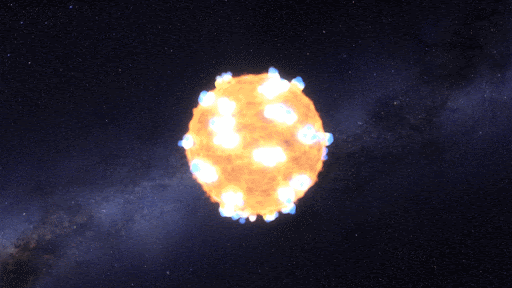
Massive stars are doomed to a more violent fate. For most of their lives, stars are balanced between the outward pressure created by nuclear fusion and the inward pull of gravity. When a massive star runs out of fuel and its nuclear processes die down, it completely throws the star out of balance. The result? An explosion!
Supernova explosions create such intense conditions that even more elements can form. The oxygen we breathe and essential minerals like magnesium and potassium are flung into space by these supernovas.
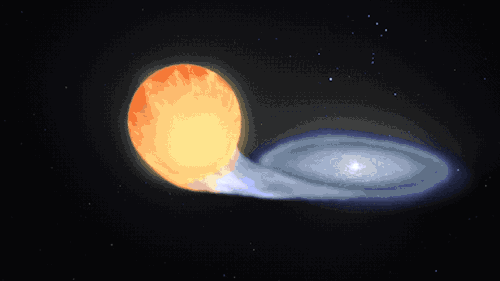
Supernovas can also occur another way in binary, or double-star, systems. When a white dwarf steals material from its companion, it can throw everything off balance too and lead to another kind of cataclysmic supernova. Our Nancy Grace Roman Space Telescope will study these stellar explosions to figure out what’s speeding up the universe’s expansion.
This kind of explosion creates calcium – the mineral we need most in our bodies – and trace minerals that we only need a little of, like zinc and manganese. It also produces iron, which is found in our blood and also makes up the bulk of our planet’s mass!

A supernova will either leave behind a black hole or a neutron star – the superdense core of an exploded star. When two neutron stars collide, it showers the cosmos in elements like silver, gold, iodine, uranium, and plutonium.

Some elements only come from stars indirectly. Cosmic rays are nuclei (the central parts of atoms) that have been boosted to high speed by the most energetic events in the universe. When they collide with atoms, the impact can break them apart, forming simpler elements. That’s how we get boron and beryllium – from breaking star-made atoms into smaller ones.
Half a dozen other elements are created by radioactive decay. Some elements are radioactive, which means their nuclei are unstable. They naturally break down to form simpler elements by emitting radiation and particles. That’s how we get elements like radium. The rest are made by humans in labs by slamming atoms of lighter elements together at super high speeds to form heavier ones. We can fuse together elements made by stars to create exotic, short-lived elements like seaborgium and einsteinium.
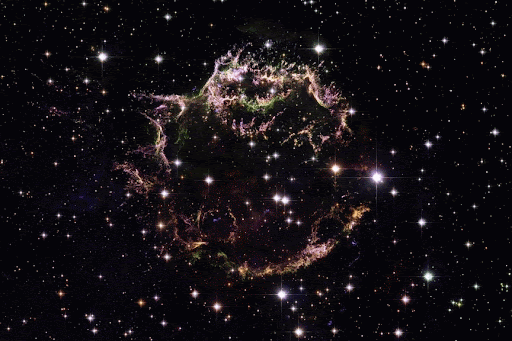
From some of the most cataclysmic events in the cosmos comes all of the beauty we see here on Earth. Life, and even our planet, wouldn’t have formed without them! But we still have lots of questions about these stellar factories.
In 2006, our Stardust spacecraft returned to Earth containing tiny particles of interstellar dust that originated in distant stars, light-years away – the first star dust to ever be collected from space and returned for study. You can help us identify and study the composition of these tiny, elusive particles through our Stardust@Home Citizen Science project.
Our upcoming Roman Space Telescope will help us learn more about how elements were created and distributed throughout galaxies, all while exploring many other cosmic questions. Learn more about the exciting science this mission will investigate on Twitter and Facebook.
Make sure to follow us on Tumblr for your regular dose of space!
Chaos theory, the principles underpinning certain nonlinear equations, also requires us to adopt a probabilistic description of many natural phenomena. The sizes and orbital positions of the planets in our solar system, for example, depend sensitively on the starting condition for solar system formation. If we ran the creation experiment again with slightly different parameters, we would get a different collection of planets with different orbital characteristics. But the results are not purely random. If we produced thousands of solar systems, again with similar but not exactly the same starting conditions, we would obtain a well-defined distribution of planet properties and planetary orbits. Although we cannot make exact predictions for any particular experiment, in principle we can determine the odds of getting any one type of planet or solar system. This intricate interplay between chance and determinism occurs throughout our physical universe and can even be applied to the consideration of how, and in what form, life can evolve.
Fred Adams, ‘Origins Of Existence: How Life Emerged In The Universe’ (2002)

(via sagansense)

‘uplink’
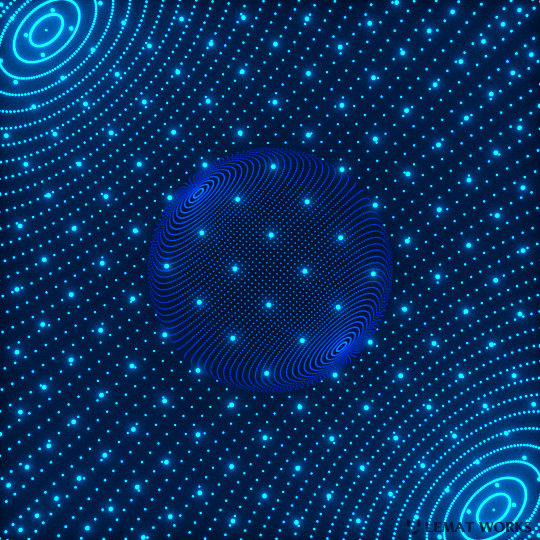
Produced by LEMAT WORKS
Dot Planet1 2 3 4 5 6 7 8 9 10 11 12 13 14 15 16 17 18 19 20 21 / Twinkle Night3 15 17 22 27 29 / LEMAT LINK / Behance(High Resolution)✨
-
 unluckycards liked this · 2 months ago
unluckycards liked this · 2 months ago -
 faidingrainbow reblogged this · 1 year ago
faidingrainbow reblogged this · 1 year ago -
 conifae liked this · 1 year ago
conifae liked this · 1 year ago -
 w-i-l-d-b-i-r-d-blog liked this · 3 years ago
w-i-l-d-b-i-r-d-blog liked this · 3 years ago -
 one-mexican reblogged this · 3 years ago
one-mexican reblogged this · 3 years ago -
 wellrounded-infinitelyminded reblogged this · 3 years ago
wellrounded-infinitelyminded reblogged this · 3 years ago -
 nah-binary reblogged this · 3 years ago
nah-binary reblogged this · 3 years ago -
 procrastinator-pride reblogged this · 3 years ago
procrastinator-pride reblogged this · 3 years ago -
 danielrain77 reblogged this · 3 years ago
danielrain77 reblogged this · 3 years ago -
 lovelyy-moonlight reblogged this · 3 years ago
lovelyy-moonlight reblogged this · 3 years ago -
 doppleganger-rental liked this · 3 years ago
doppleganger-rental liked this · 3 years ago -
 adamthegirl reblogged this · 3 years ago
adamthegirl reblogged this · 3 years ago -
 the-replicant liked this · 3 years ago
the-replicant liked this · 3 years ago -
 duwango reblogged this · 3 years ago
duwango reblogged this · 3 years ago -
 duwango liked this · 3 years ago
duwango liked this · 3 years ago -
 amethystwitch reblogged this · 3 years ago
amethystwitch reblogged this · 3 years ago -
 bestandworsthair liked this · 3 years ago
bestandworsthair liked this · 3 years ago -
 vinkalavikinga reblogged this · 3 years ago
vinkalavikinga reblogged this · 3 years ago -
 halosydne reblogged this · 3 years ago
halosydne reblogged this · 3 years ago -
 squidlysnacks reblogged this · 3 years ago
squidlysnacks reblogged this · 3 years ago -
 nati7 liked this · 3 years ago
nati7 liked this · 3 years ago

